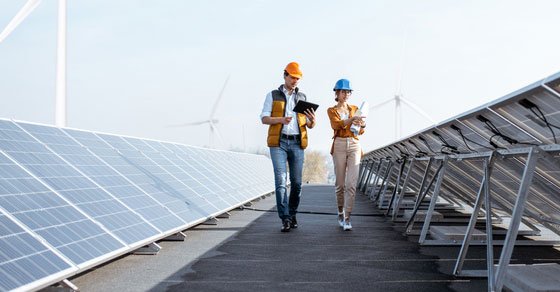Claiming The Business Energy Credit for Using Alternative Energy
 Are you wondering whether alternative energy technologies can help you manage energy costs in your business? If so, there’s a valuable federal income tax benefit (the business energy credit) that applies to the acquisition of many types of alternative energy property.
Are you wondering whether alternative energy technologies can help you manage energy costs in your business? If so, there’s a valuable federal income tax benefit (the business energy credit) that applies to the acquisition of many types of alternative energy property.
The credit is intended primarily for business users of alternative energy (other energy tax breaks apply if you use alternative energy in your home or produce energy for sale).
Eligible Property
The business energy credit equals 30% of the basis of the following:
– Equipment, the construction of which begins before 2024, that uses solar energy to generate electricity for heating and cooling structures, for hot water, or heat used in industrial or commercial processes (except for swimming pools). If construction began in 2020, the credit rate is 26%, reducing to 22% for construction beginning in calendar year 2023; and, unless placing the property is in service before 2026, the credit rate is 10%.
– Equipment, the construction of which begins before 2024, using solar energy to illuminate a structure’s inside using fiber-optic distributed sunlight. If construction began in 2020, the credit rate is 26%, reduces to 22% for construction beginning in 2023; and, unless you’re placing the property in service before 2026, the credit rate is 0%.
– Certain fuel-cell property the construction of which begins before 2024. If construction began in 2020, the credit rate is 26%, with reduction to 22% for construction beginning in 2023; and, unless placing the property is in service before 2026, the credit rate is 0%.
– Certain small wind energy property the construction of which begins before 2024. If construction began in 2020, the credit rate is 26%, reduces to 22% for construction beginning in 2023; and, unless placing the property in service before 2026, the credit rate is 0%.
– Certain waste energy property, the construction of which begins before January 1, 2024. If construction began in 2020, the credit rate is 26%. The credit rate reduces to 22% for construction beginning in 2023. Lastly, unless you are placing the property in service before 2026, the credit rate is 0%.
– Certain offshore wind facilities with construction beginning before 2026. There’s no phase-out of this property.
Additional Criteria
The credit equals 10% of the basis of the following:
– Using certain equipment to produce, distribute, or use energy derived from a geothermal deposit.
– Cogeneration property with construction beginning before 2024.
– Certain micro-turbine property with construction beginning before 2024.
– Certain equipment, with construction beginning before 2024, that uses the ground or ground water to heat or cool a structure.
Pluses and Minuses
However, there are several restrictions. For example, the credit isn’t available for property when acquiring it with certain non-recourse financing. Additionally, if the credit is allowable for property, there will be a reduction in the “basis” by 50% of the allowable credit.
On the other hand, there is a favorable aspect for the same property. That is that the credit can sometimes be used in combination with other benefits. For example, federal income tax expensing, state tax credits or utility rebates.
There are business considerations unrelated to the tax and non-tax benefits that may influence your decision to use alternative energy. And even if you choose to use it, you might do so without owning the equipment, which would mean forgoing the business energy credit.
As you can see, there are many issues to consider. Our accounting firm can help you address these alternative energy considerations.
